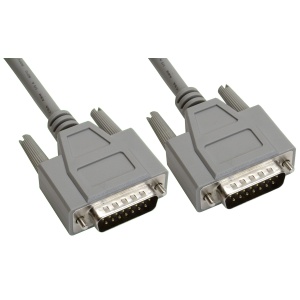In the digital era, a robust and efficient server room is a backbone of any thriving business. It’s a nerve center that keeps your communication, data storage, and applications running smoothly. So, how exactly do you set up an efficient server room for your business? Well, buckle up because we’re about to take a deep dive into the process.
Table of Contents
- Understanding the Concept: What is a Server Room?
- Why Should You Set Up an Efficient Server Room?
- Key Factors to Consider While Setting Up a Server Room
- Step-by-step Guide: How to Set Up an Efficient Server Room for Your Business
- The Role of Maintenance in Server Room Efficiency
- Cost Implications: How Much Does it Cost to Set Up a Server Room?
- The Future of Server Rooms: Trends to Watch Out for
- FAQs
- Conclusion
Understanding the Concept: What is a Server Room?
In essence, a server room is a dedicated space where a business houses its servers. This room houses a plethora of networked computer servers connected to the internet. But what makes it different from your regular office space? The key lies in its design, which focuses on specific needs such as climate control, fire protection, and security.
A. The Evolution of Server Rooms
Back in the day, server rooms were a chaotic mess of wires and boxes tucked away in the corner. However, over time, they’ve evolved to become an integral part of business infrastructure, designed with precision and governed by specific standards.
B. Server Room vs. Data Center
Often, people confuse server rooms with data centers. While they serve a similar purpose – storing and managing data – their scale and setup can be vastly different. A server room is typically a smaller setup within a business premises, while a data center is a large, separate facility that can support multiple businesses.
Why Should You Set Up an Efficient Server Room?
Think of your server room as the heart of your business – it needs to pump data without missing a beat. An efficient server room provides several benefits:
A. Continuous Business Operations
An efficient server room ensures your business’s IT infrastructure is always up and running, minimizing downtime.
B. Improved Data Security
Data is gold in today’s digital age. A well-designed server room with robust security protocols can protect this invaluable asset.
C. Enhanced IT Performance
An efficient server room can maximize the performance of your IT equipment, boosting productivity and output.
Key Factors to Consider While Setting Up a Server Room
So, what are the factors that you need to keep in mind when setting up an efficient server room for your business? Let’s delve into some crucial considerations:
A. Location
Select a location that minimizes risk. It should be away from potential hazards such as water sources or high-traffic areas.
B. Climate Control
Servers generate heat, which can lead to overheating if not managed. Make sure you have an effective cooling system.
C. Power Supply
Your servers need a consistent and reliable power source. Consider backup options to ensure continuity during power outages.
Step-by-step Guide: How to Set Up an Efficient Server Room for Your Business
Setting up a server room can be a daunting task, but when broken down into manageable steps, it becomes a breeze. Let’s look at these steps:
A. Planning
Start with a detailed plan that outlines your current needs and future growth. Consider aspects like budget, space, security, and maintenance.
B. Designing
Based on your plan, design your server room. Layout your racks, wiring, cooling systems, and security measures.
C. Installation
With your plan and design in hand, it’s time to install your servers, network equipment, and any other necessary hardware.
D. Testing
After installation, test your setup thoroughly. Check the efficiency of your cooling system, power supply, and network connections.
The Role of Maintenance in Server Room Efficiency
Maintaining your server room is as important as setting it up. Let’s explore the key aspects of server room maintenance:
A. Regular Inspections
Regularly inspect your server room for any abnormalities. Check your servers, cables, cooling systems, and power supply for any signs of wear and tear or potential issues.
B. Proactive Upgrades
Keep an eye out for the latest advancements in server technology and upgrade your equipment as needed to stay ahead of the game.
C. Disaster Recovery Planning
Disasters are unpredictable but not unforeseeable. Having a robust disaster recovery plan in place can help you bounce back quickly in case of any unfortunate incidents.
Cost Implications: How Much Does it Cost to Set Up a Server Room?
The cost of setting up a server room can vary greatly depending on the size of your business, the complexity of your IT needs, and the level of redundancy and security required. As a rule of thumb, it’s best to aim for a balance between cost efficiency and operational efficiency.
The Future of Server Rooms: Trends to Watch Out for
In the fast-paced world of technology, trends come and go. But when it comes to server rooms, there are some key trends to watch out for:
A. Virtualization
Virtualization can help you make the most out of your server resources and reduce the physical space needed.
B. Green Computing
As sustainability becomes more important, energy-efficient and environmentally friendly server rooms are becoming the norm.
FAQs
- What is the ideal temperature for a server room?The recommended temperature range is between 64.4°F and 80.6°F (18°C and 27°C).
- How often should I perform maintenance checks on my server room?Ideally, you should inspect your server room at least once a week.
- Can I set up a server room in any space within my business premises?While technically possible, it’s best to choose a location that is safe from potential hazards and allows for proper ventilation.
- Is it better to have a server room on-site or off-site?Both options have their pros and cons. On-site servers offer more control, while off-site servers can offer higher security and disaster recovery options.
- How much does it cost to run a server room?The cost can vary depending on the size and complexity of your server room. It includes energy costs, maintenance costs, and the cost of any upgrades or replacements.
- What are the common problems faced in server rooms?Common issues include overheating, power outages, equipment failure, and security breaches.
Conclusion
Setting up an efficient server room for your business is a crucial and intricate task. It requires careful planning, strategic design, and continuous maintenance. By focusing on the right factors such as location, climate control, and power supply, you can create a server room that not only meets your current needs but also accommodates future growth. Remember, an efficient server room is more than just a room full of servers – it’s the heart of your business that keeps the data flowing smoothly.
Stay ahead of the game by keeping an eye on emerging trends like virtualization and green computing. Regular maintenance checks, proactive upgrades, and disaster recovery planning will ensure your server room operates seamlessly.
Setting up an efficient server room for your business can seem like a daunting task, but it doesn’t have to be. With the right information and approach, you can create a server room that is efficient, secure, and future-proof. So, are you ready to take your business to the next level?












